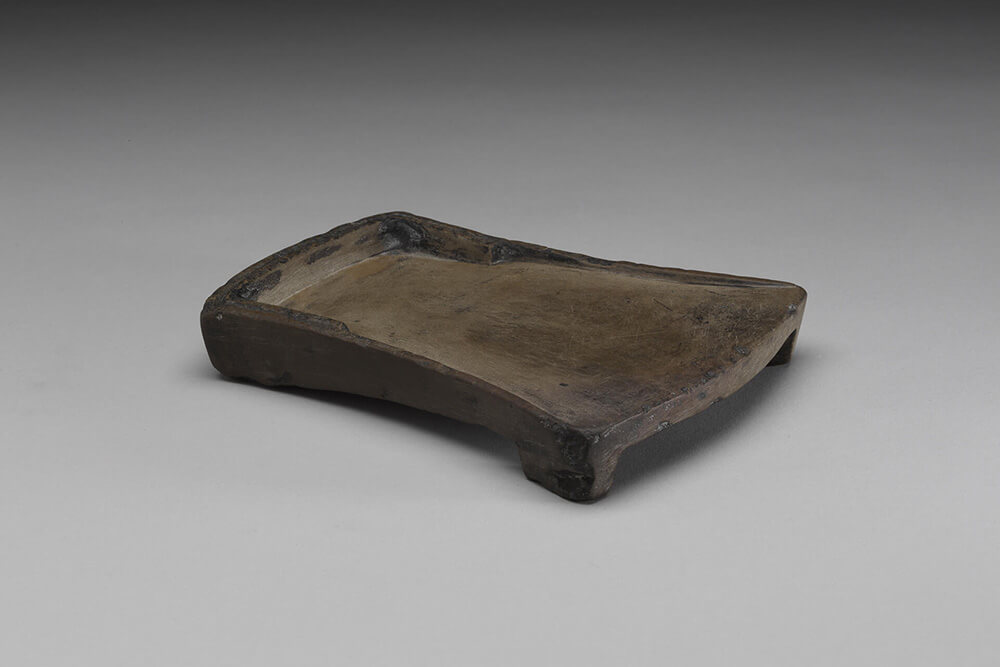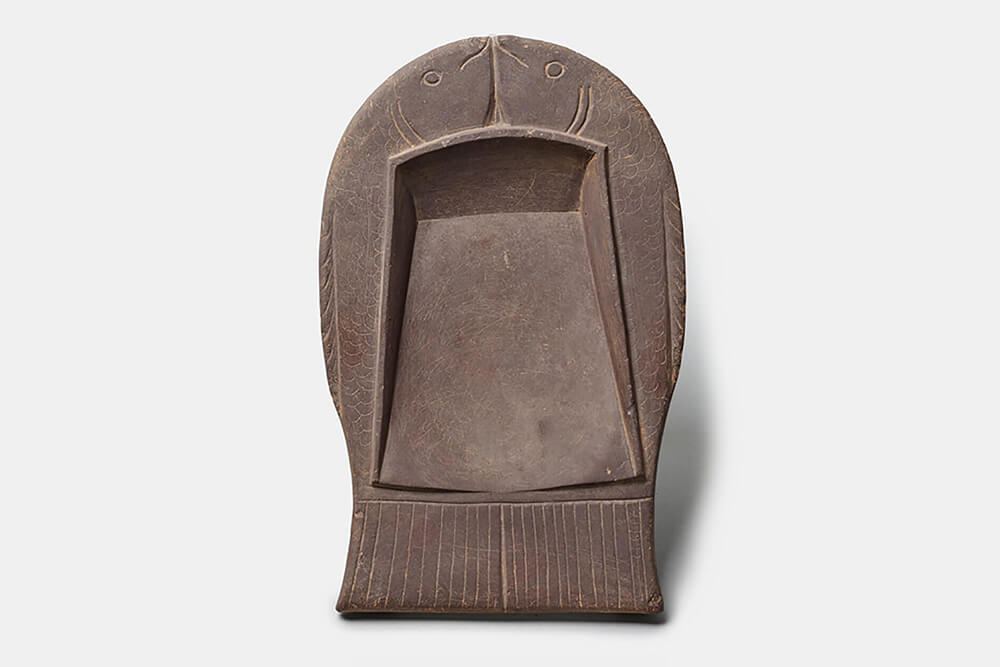The Maturation of Inkstone Styles
With the maturity of the imperial examination system during the Song Dynasty, a large group of scholars emerged in society. This extensive population of literati laid the foundation for the development of inkstones in the future. Prior to 1987, students in primary and secondary schools in Taiwan used brushes to write compositions and often used rectangular inkstones to grind ink. This flat-bottomed inkstone style originated from the "chao-shou inkstone" of the Song Dynasty, which featured a hollowed-out base. Would you like to know how those inkstones evolved?
Inkstone in the Shape of the Chinese Character "Wind" (Feng)
The inkstone has feet at its base, and the tail of the inkstone is raised, making it convenient for the ink to flow backward towards the inkstone's head. There is no distinct separation between the inkwell and the inkstone platform. The tail of the inkstone is wide, while the head is narrow. When viewed from above, the inkstone's surface appears trapezoidal. The predecessor of this inkstone was the winnower-shaped inkstone.
- Huocun inkstone in the shape of Chinese character "feng (wind)"
- 11th-12th century, Liao to Jin dynasty
- Inkstone in the shape of paired fish
- Song dynasty (960-1279)





